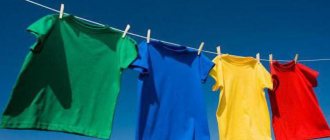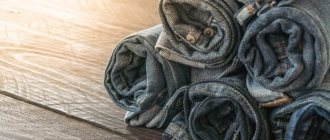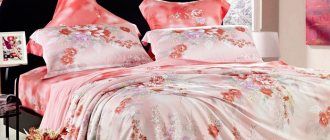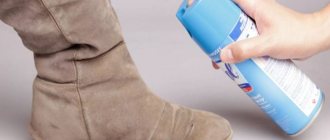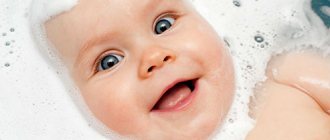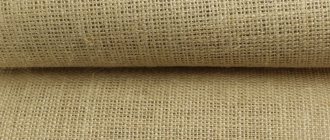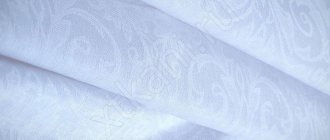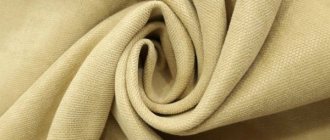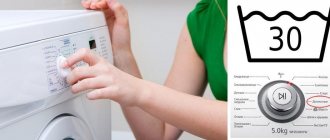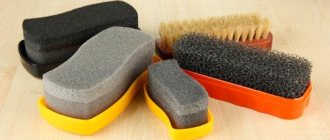Why are water-repellent impregnations needed, what laws of physics are Durable Water Repellent based on, what modern DWRs are, and how to choose the right impregnation to protect clothing and equipment from moisture
Owners of modern travel clothing or shoes are often faced with manufacturers’ recommendations to periodically treat their products with DWR water-repellent impregnation. This is not objectionable when it comes, for example, to fleece, but why impregnate membrane clothing? After all, the presence of a membrane already implies that the product will reliably protect from rain or sleet.
We wrote about how the membrane itself works in an article about the principles of operation of climate membranes. But the effectiveness of the membrane depends on many factors, not least the DWR.
Even the most expensive membrane will disappoint its owner if an additional water-repellent coating does not protect it from external moisture.
Rules for using the product
The manufacturer offers instructions for using the product. It says that first the surface is well cleaned.
If clothes are being processed, then it is worth washing them. Next, the material needs to be dried; it should not be wet. After preparation, the product is sprayed onto the surface. It is recommended to maintain a distance of 20-30 cm.
After spraying, the manufacturer advises waiting about 2-3 hours. During this time, the product will be consolidated. It is recommended to straighten the treated item. There is no need to put on your shoes before the specified time.
This product can be sprayed on suede, cotton fabrics, leather products, knitwear, nubuck, carpet, furniture, car seats. Some people use Aqua Armor to protect brick, wood, and concrete. And this is not the entire list of materials for which the product can be used.
The question arises how long this amazing remedy lasts. The effect may last for a variable amount of time. It depends on the structure of the material. The length of the result may be affected by the amount of product applied. For example, if a person decides to use protection against dirt on suede shoes, and he wears them a couple of times a week and wipes them systematically, then he can not be afraid of dirt for more than 2 months. The effect of the product will decrease, but the shoes will still repel moisture.
When a person uses various cleaning devices, the water-repellent properties will decrease. After washing in the washing machine using powder, you will need to re-process the item. To prolong the effect, it is recommended to wash by hand. Using this method, the product will work longer, and the item will retain its water-repellent properties for another 10 washes.
Features of the use of water repellents
Before you start using a water repellent, you need to consider several nuances:
- Impregnations for clothing are added to water, into which the jacket or trousers are then dipped. Shoes cannot be treated this way. Therefore, the easiest way is to buy a spray that can be easily applied to any item.
- To ensure that the protective coating remains on your clothes as long as possible, try to wash items by hand.
- Before applying any product, it is necessary to rinse and dry the item being treated thoroughly.
- The maximum effect from the water repellent can be expected within a day. It is better not to wear impregnated shoes for 24 hours after treatment.
- If you accidentally drop ketchup or grease onto the treated surface, you can remove the stains with a regular paper napkin.
- Products that form water-repellent coatings on the surface are not recommended for use on bedding and underwear.
DWR – Durable Water Repellent
Let's start, perhaps, with English.
DWR is short for Durable Water Repellent. What does this mean?
“Durable” – “existing for a long time”, “durable”. “Water” – “water”. “Repellent” – “a substance that repels, throws away”, in this case, water. So, DWR = “durable (durable), water-repellent impregnation.”
The English terms “waterproofing”, and occasionally “impregnation”, are usually found among European manufacturers.
That's sorted out. It's time to understand how this thing works.
Use of impregnation in sports
Everyone knows that treated fabric retains its hydrophobic properties for no more than a year. An integral part (waterproof apron) in a sports boat must strictly fulfill its purpose, that is, protect the kayak from excessive flooding with water. Sewing a protective apron is not difficult, but it is much more difficult to properly process it and protect it from moisture. There are many recipes for how to prepare water-repellent impregnation with your own hands. Components such as synthetic resins, wax, paraffin, fats, polystyrene, and polyisobutylene are often used. Below is a recipe that was used to make impregnation back in 1958. Studies have shown that the treated aprons remained waterproof throughout the entire summer season.
So, the components used:
- A solution of paraffin in turpentine 15-20% – 100-200 hours.
- A solution of polystyrene in toluene 12% – 100 hours.
- A solution of low molecular weight polyisobutylene in toluene 4% – 400 hours.
- Solvents (turpentine and toluene) - added if necessary to obtain the desired consistency.
The fabric is soaked evenly with the resulting solution and dried under natural conditions. If the fabric begins to leak water in places, the impregnation must be repeated.
General points for use
It’s worth spending a little time on the types of existing impregnations.
Apply by adding to water
To treat fabric, there is a process that implies 100% protection from moisture by immersing the fabric in a special aqueous solution. This method saves a lot of time and can also combine washing, rinsing and chemical treatment. After completing this procedure, the item should be completely dried.
Spray applied
Hydrocarbon-based impregnations are sold in the form of aerosols. The most important thing that is worth noting is the method of applying this kind of substance, namely, this should be done only in well-ventilated areas and in order for the dirt-repellent coating to lay down evenly, the surface of the fabric should be slightly damp.
Casein-based impregnation
There is also a third type of impregnation. It is distinguished by the fact that it consists of several types of fats and also contains a chemical substance called casein. Its main feature is the universal sealing of both hard and soft tissues, including synthetic ones. Possessing unique properties, this type of impregnation is well suited for treating travel equipment.
All manipulations with materials must be carried out only after it has been degreased, otherwise the protective coating will be unevenly distributed over the surface of the fabric, which will not provide absolute protection from moisture.
When treating fabric in an aqueous solution, you need to ensure that the material is completely uniformly covered with the substance. To make sure that the whole process is going properly, you can knead the fabric yourself with your own hands. Using soap solutions, you should prepare the soap in advance, which will then need to be crushed into small pieces and dissolved in warm water.
Need for DWR treatment
The question often arises about whether water-repellent treatment is needed at all, especially when it comes to membranes. It would seem that the membrane itself does not allow water to pass through, so why supplement it with DWR? If you carefully read the article about membranes, you probably remember that the membrane layer is under another, more durable fabric. It is this fabric that undergoes DWR treatment, and not the membrane itself. If the outer fabric gets completely wet, a barrier of water film will form, interfering with the breathability of the membranes.
Insulation fibers, and especially down, lose their heat-insulating properties when wet, so it is important that the insulation does not get wet, and accordingly, in this case, DWR treatment is very useful.
Types of moisture-repellent agents
There are three types of protection for shoes from getting wet. The most common option is water-repellent shoe spray. It is most convenient to use. Using a sprayer, it is applied to the surface of the material. There is no need to purchase special tools for applying the substance, such as special brushes or sponges. The spray retains its properties for several seasons from the start of use. The aerosol can only be used outdoors. Creams can also protect shoes from water during bad weather. Thick creams are perfect for shoes made of genuine leather. They consist of wax, animal fats, solvent and coloring matter. This cream can even be applied to some types of leather clothing. Liquid creams (otherwise known as emulsions) are preferably used in warm climates. They contain a lower percentage of solvent than thick creams. This means that the shoes will be more susceptible to liquid getting inside. But the emulsion will add shine to the shoes. The third way to protect shoes from moisture is impregnation. The principle of action distinguishes impregnation from spray and cream. It penetrates into the material, thereby providing more reliable hydrophobicity. You need to buy water-repellent impregnation strictly in accordance with the material from which the shoes are made. For nubuck and suede, impregnation with fluorocarbon resin is suitable. For leather, you can use water-based impregnations. To protect shoes made of other materials from dirt and water, fluorine-containing water repellents are used.
Advice! When buying a new pair of boots or boots, you need to carefully study the composition of the material from which the shoes are made. This simple step will help you choose the right water repellent.
Classification of water-repellent impregnations by degree of protection
The compositions are divided not only by purpose, but also by resistance to washing. These properties are designated (WR, DWR or SDWR) and indicate how many washes the product can withstand.
The values used refer mainly to factory techniques for applying moisture-repellent impregnations. The factory processing indication can be read on the label.
WR (Water Repellent) - 4/75. Quite weak stability. After 6 washes it loses about 70% of its properties.
DWR (Durable Water Repellent) - 15/75–10/80. Average stability. Applicable to almost all membrane fabrics. After 15 washes retains 80% of its properties.
Membrane spray
SDWR - 55/75–100/80. Increased stability. It is used in VIP-level clothing and retains its properties after 20 washes.
DWR Manufacturers
In almost any specialized outdoor store you will find two main companies producing DWR impregnations: Nikwax and Grangers . Both UK companies have been doing their business for a long time and have a wide range of different impregnations in their arsenal. They have quite detailed descriptions about application methods and the purpose of the composition, so please read the instructions carefully. For some reason, our mentality prevents this, but still, for the sake of the safety and durability of your equipment, read the labels!
Of course, these companies are far from the only ones in this area: in sports stores you will probably also find Atsko , McNett or Revivex . They are also suitable, but first of all, I would advise you to buy not a restorative impregnation, but a special detergent for washing products with DWR. This product, of course, removes stains worse, since it does not contain aggressive bleaches and conditioners, but it is much less harmful not only to the impregnation, but also to technological fabrics such as membranes. This means that the impregnation will have to be restored less often and the product itself will live longer.
The best companies of water-repellent impregnations for shoes and clothing
Buyers consider German, Russian, Spanish, and French brands to be the most reliable manufacturers. It is their products that are described in this rating, where there are budget offers, and products at average prices, as well as premium quality options.
This is what the 7 best manufacturers of water-repellent products look like:
Collonil is a German manufacturer of care products for boots, shoes, etc., as well as bags and clothing. It began work in 1909 and entered the Russian market in 1996. The company is popular due to the production of fast-acting, highly active, safe and universal sprays and aerosols with water- and dirt-repellent properties. With their help, deep impregnation of products made of nubuck, velor, suede, and leather is ensured. Many of them are made on the basis of fluorine, which increases the effectiveness of the effect. The company's products do not leave streaks and retain the beautiful appearance of the products.
Trekko - this Russian brand produces water protection impregnations, cleaning products for boots, shoes, etc., and various burn creams. Its products are designed for a comfortable hike in nature. They are produced in convenient packaging with dispensers, are economical to use, do not spoil the structure of materials and do not leave unsightly marks. With their help, a reliable barrier is created in the form of a thin transparent coating. Its water-repellent impregnations are considered one of the best also because they act quickly, “work” for several days and do not leave an unpleasant odor.
Nanomax is a Russian brand, known, in particular, for its superhydrophobic self-cleaning impregnations based on highly active components - titanium and silicon. First of all, they are designed for processing natural and artificial leather with a smooth surface. They do not have a strict shelf life and their range of action is very wide - protection from water, dirt, snow and even dust. The brand's products do not “clog” the surface and maintain excellent breathability of the products.
Salamander is a German company that produces care products for boots, shoes, etc. Its range includes effective impregnations for textiles, suede, nubuck, leather and leatherette. They are suitable for daily use and do not harm the structure or appearance of the materials. With their help, a reliable protective barrier is created to prevent exposure to water, snow, and dirt during heavy rainfall. The company's products behave well in conditions of high humidity.
Tarrago is a Spanish family-owned company producing cosmetics for boots, sneakers and fabrics, which began operations in 1940. Its product range includes more than 10 options for water-repellent products based on silicone, resins and a number of other active components. With their help, abrasion, cracks, drying out and roughening of materials under the influence of moisture are prevented. The company's products are suitable for skin of any type and color. Some items are available in several volumes, 100 and 250 ml, and if you take a larger package, you can save a little. They are easily sprayed onto the surface and the products treated with them dry in a short time.
Saphir is a French manufacturer of inexpensive shoe cosmetics
Products designed to protect against water attract particular attention in its line. It has several types of impregnations without color, which allows you to use them unnoticed by others
The composition is recognized as safe for humans and various materials - leather, suede, nubuck, velor, leatherette. It includes resins, silicone, propane, butane, mineral oils and some other components.
Salton is a Russian brand that supplies the market with products for the effective and safe care of leather, suede, and nubuck products. They come in cans that are convenient to use. The fact that its water-repellent impregnations for shoes are the best is confirmed at the global level by the ISO 9001:2008 certificate. The resin included in the composition gives the products good water resistance and allows you to “breathe” freely, which eliminates the appearance of an unpleasant odor. On average, the shelf life of the company's products is 5 years.
Is it necessary or not?
I think after reading this article no one has any doubts. Impregnations are needed! They preserve the breathable properties of your membrane clothing and shoes, give initially wet materials water-repellent properties, and help outer tent awnings and backpacks last longer.
Jacket after water test. One half of the jacket was treated with a water-repellent treatment, but the other was not. © grangers.co.uk
Modern impregnations are safe for humans and the environment and easy to use. Among the world's manufacturers of care products for clothing, shoes and equipment, one of the leaders is the English one.
It was the first company of its kind to be awarded the Bluesign mark - a strict quality standard that requires respect for natural resources and human health. The Swiss Bluesign quality system was created to solve the problem of toxicity in light industry, and the Bluesign certificate confirms the exclusion of substances harmful and hazardous to humans from the production process. The products are widely represented in the Kant chain of stores.
Impregnations and washing and cleaning products from the Granger's brand, as well as others and Antiliq, perfectly clean and protect your clothes, shoes and equipment from moisture, provide you with comfort and safety both on the ski slopes, while traveling, hiking and mountaineering, and in everyday urban use.
Author: Alexander Karpov
Best Water Repellent Spray Brands
Most often, stores buy products that are “well-known,” however, this does not mean that there are no other equally high-quality analogues on sale. Let's consider the main compositions with the best characteristics.
Collonil
Collonil Nanopro water-repellent spray costs about 1,300 rubles. This product is suitable for smooth leather, velor, fur, nubuck and any textiles. The Collonil composition was developed using modern nano-technologies. Particles of the “drug” envelop the material and form a protective moisture-resistant film on it. Collonil is most suitable for use in the off-season, but it cannot handle chemicals and salt.
It is also worth noting the rather pungent odor of the aerosol. Because of this, using Collonil indoors is not recommended. The spray is not sold in every city, so if you want to purchase it, it is better to immediately start searching for Collonil on the Internet.
Salamander
Salamander Universal SMS shoe spray is very popular among consumers due to its relatively low cost from 300 to 500 rubles, as well as its wide range of applications (Salamander aerosols treat not only clothes and shoes, but also umbrellas, as well as “breathable” Gore materials -Tex). However, if you have ever used products from this brand, then you most likely noticed a rather strong and pungent odor. The manufacturer does not hide this information and strongly recommends applying the aerosol only outdoors or in a ventilated area.
Drywall
The “Drywall” product, costing 1,990 rubles, is a universal water-repellent spray that is suitable for both natural and artificial fabrics of any type (including Gore-Tex materials and membrane shoes). The composition has a long validity period (up to 3 months). The main advantage of the Drywall spray is the absence of toxic components in the protective aerosol. In addition, nano impregnation for shoes does not contain oil, wax, acrylic, paraffin and solvents. The appearance of things does not change even after repeated treatment with a water repellent.
Drywall for shoes forms a transparent water-repellent coating that does not clog the pores of the material, so “your skin will breathe.” Thanks to these properties, the water repellent can be used both in winter for skiing and in hot weather.
If you do not want to use a water-repellent spray, then you can choose a high-quality impregnation.
Application methods and composition of DWR
Without going into details, I will say that silicone or Teflon is used to impart water-repellent properties; If you want a more in-depth study of the issue of water repellency, I advise you to read the material published on one of the Bask forums. But for us it is still important to know only the substance with which the impregnation is transported - it can be either a water base or a chemical one.
And here I am entirely in favor of a water-based product: in addition to the fact that such DWR can be applied to both wet and dry fabrics, it is also harmless to human skin, and most importantly, to the environment. Chemical impregnations have a pungent odor; their application is only possible outdoors, as there is a risk of poisoning.
It is no coincidence that we were talking about applying impregnations, because this procedure is performed not only at the factory during the production of fabrics. Durable is translated as “stable”, however, any impregnation is washed out of the fabric over time: during washing, in the rain and due to friction. This means that during the use of your clothing and equipment, this impregnation must be restored.
We have already considered the categories of DWR impregnations above, and this is what you should be guided by when purchasing special impregnations in the store. How to apply them and care for equipment is a topic for a separate article, which I will definitely write, subscribe so you don’t miss it. But first of all, carefully read the labels on your clothes and jars of impregnation.
Types of impregnations
Fabric impregnations are divided into three types according to their functions:
- waterproof;
- fireproof;
- biostable.
The third type prevents rotting and the proliferation of bacteria and is rarely used for fabrics (mainly for jute and semi-jute materials). Fireproof and water-repellent impregnations are more in demand.
Water-repellent impregnation
After treatment with such compounds, moisture and water do not penetrate through the fabric. Depending on the material and purpose of processing the fabric, one of the types of water-repellent impregnation is selected:
Impregnation type WR
The most popular type is WR type impregnation, which is applied only to the outside of the material. The treated fabric is not susceptible to getting wet, as drops of water roll down the protective layer.
Also, the fabric does not become damp at high humidity, since the impregnation layer does not allow even the smallest water molecules to pass through in the form of steam or fog.
Impregnation DuPont
Teflon impregnation (DuPont) is an analogue of WR impregnation, but unlike it, it is applied to products that are used in more severe conditions. Teflon impregnation is most often used for impregnating furniture fabric, tents and outerwear.
Impregnation PD
PD impregnation is applied to the inner surface of the fabric and not only prevents the penetration of moisture, but also makes the material more durable. In clothing it is often used in combination with other types of impregnations.
Silver and Ultra Foil impregnations are also used for clothing. The first is applied to clothing from the outside and, in addition to water-repellent properties, has sun protection properties, preventing the material from fading. Ultra Foil is applied from the inside and forms a durable, shiny protective layer.
A separate item is silicone impregnation, which is applied to tents and is not used for clothing. This is due to the high cost of the product, the complexity of the application process and low efficiency compared to polyurethane analogues.
Impregnations for membrane fabrics
Despite the positioning of membrane fabrics as a material that is itself waterproof, sometimes it is additionally treated with DWR-type impregnations. This product protects the front side of the membrane from water penetration.
The principle of operation of membrane fabric is based on the fact that it absorbs moisture without letting it in. But the water accumulated inside the membranes prevents heat from escaping to the outside, so although such hydrophobic fabric is effective, a person quickly begins to sweat in clothes made of such material.
In addition, if moisture does not roll down the impregnation layer, but is absorbed into the fabric, the clothes become heavier. DWR is mainly used for processing clothing and accessories for tourists, as well as for some types of military uniforms.
Despite its water-repellent properties, DWR impregnation is water-soluble. Under normal conditions, the protective layer is damaged very slowly, but such items must be washed using special products that do not damage the protection.
Fire retardant impregnation
Fireproofing impregnation is used to treat workwear, but is sometimes used to treat tents (tourist and military). This impregnation does not guarantee complete protection against fire and burns: at high temperatures such a layer melts, but this can happen for different times depending on the composition of the impregnation.
The fabric itself also plays a big role. So, a tarpaulin, which itself is canvas impregnated with water-repellent and fire-resistant compounds, will not burn.
If you treat cotton or other knitted fabric with the strongest fire-retardant impregnation, sooner or later the protective layer will collapse and the material will begin to burn.
A little theory
Let's remember chemistry and physics together.
There is such a section - “Physical chemistry of surface phenomena”. This is exactly what we need. Our clothing fibers are a solid, and water is a liquid.
That is, we have an interface between the “solid” and “water” phases. Let's consider what happens to a drop of water free from external forces. Water molecules located deep in the drop from all sides are attracted by all other molecules, so that the forces acting on any such molecule are compensated. The molecules located at the surface of the drop are not surrounded by similar molecules on all sides - they are not above the surface. Accordingly, there are no forces that compensate for the attraction of underlying molecules. As a result, molecules located at the surface of the drop (i.e., at the boundary of the drop) are constantly drawn into the drop. In total, this leads to the fact that the drop tends to reduce its surface area to a minimum for a given volume - to take the shape of a ball, which has the largest volume with a minimum area - this is energetically “favorable” for the liquid. It looks as if the drop is in an elastic shell, although there is nothing there. In the absence of external forces (acceleration, ground reaction, etc.), a drop (or even a bucket) of water will take the shape of a ball. Remember the reports from orbit.
What happens when a drop of water comes into contact with a solid?
In the simplest case, everything is determined by the relationships between the forces of attraction between the molecules of substances. If the force of attraction between the molecules of a solid and the molecules of a liquid is greater than the force of attraction between the molecules of the liquid itself, the surface of the solid will attract liquid molecules from the drop to itself - the surface will be wetted by this liquid. If the forces of attraction between the molecules of a solid and water are not enough to overcome the intermolecular forces in the liquid itself, then the molecules of the liquid will be less attracted by the molecules of the solid - the liquid will not wet its surface. Note that in this case the solid body does not repel the liquid, but only weakly attracts the liquid molecules. So much weaker that the forces tending to pull the drop into a ball begin to prevail. These forces are called surface tension forces.
The best impregnation for shoes made of smooth and patent leather
Lotus Effect
The Lotus Effect moisture-repellent mixture is presented in a convenient spray format that is easy to use. This is a super-hydrophobic product that provides a high level of protection against getting wet, penetration of dust, dirt and the negative effects of chemical reagents.
After application, an ultra-thin barrier layer is formed on the surface, which does not interfere with the free circulation of air. Does not contain wax components.
Salton Expert
Salton Expert is available in a convenient spray format. The maximum degree of protection is achieved thanks to the increased content of fluorocarbon resins, which form an ultra-thin barrier on the surface without interfering with the free circulation of air.
The unique formula demonstrates a prolonged action, guaranteeing resistance to humidity throughout the day in adverse conditions. The cumulative effect contributes to economical consumption.
Salton Expert reliably protects against penetration of moisture, dirt and dust. Helps maintain elasticity. Suitable for processing membrane materials, smooth and patent leather, suede, velor and textiles.
High quality, affordable cost and many positive reviews keep it among the leaders in the rating of hydrophobic products.
Famaco Eco Protect
Famaco Eco Protect hydrophobic liquid is available in a convenient aerosol format. It is designed to process any type of leather, suede, nubuck, velor and fabric. Provides reliable resistance to moisture, dirt, dust and reagents.
The unique formula promotes air circulation, making Eco Protect suitable for application to membrane materials. A nano-barrier formed on the surface of the product after application prevents color loss, drying out and deformation. The product prevents the formation of white salt stains and prevents getting wet.
Moisture-repellent properties are activated 30 minutes after application and remain for a long time. Due to the fact that the composition does not contain a propellant, Eco Protect does not harm the environment and human health. The small volume of the bottle, measuring 150 ml, is convenient for transportation in luggage or hand luggage.
Belongs to the premium segment, the only disadvantages include high cost. However, economical consumption, ease of use and a good level of protection ensure high popularity and a large number of positive customer reviews.
TOP Self-shining Black
The unique formula of water-repellent impregnation TOP Self-shining Black provides a high degree of resistance to penetration of water and other liquids, dirt, dust and chemicals. The product is available in a convenient format - the tube is equipped with a special sponge applicator, thanks to which it is easily dosed and distributed over the surface of women's or men's leather shoes, forming a barrier.
The wax included in the composition acts as a lubricant, it cares for the material, prevents color loss, drying out and deformation. Thanks to natural resins, TOP Self-shining Black does not require additional polishing, which significantly saves time.
The disadvantages include the fact that the product accumulates on the surface. This necessitates rinsing. The manufacturer recommends wet cleaning after 5-6 uses.
Kiwi Aquastop Extreme
Aquastop Extreme from the KIWI brand is available in a convenient aerosol format. It is intended for any skin type, incl. patent leather, suede and textile boots.
The silicones included in the composition mask scratches and abrasions, add shine and prevent color fading. The liquid contains caring components that prevent drying out, cracking and deformation.
It is applied in an ultra-thin layer, forming a protective barrier against getting wet and exposure to negative factors such as dust, dirt and chemicals. Prevents the formation of grease stains and salt stains. The unique formula provides a prolonged effect - during bad weather, one application every 15 days is enough.
KIWI Aquastop Extreme is suitable for treating not only boots, but also tents, clothing, and camping equipment.
